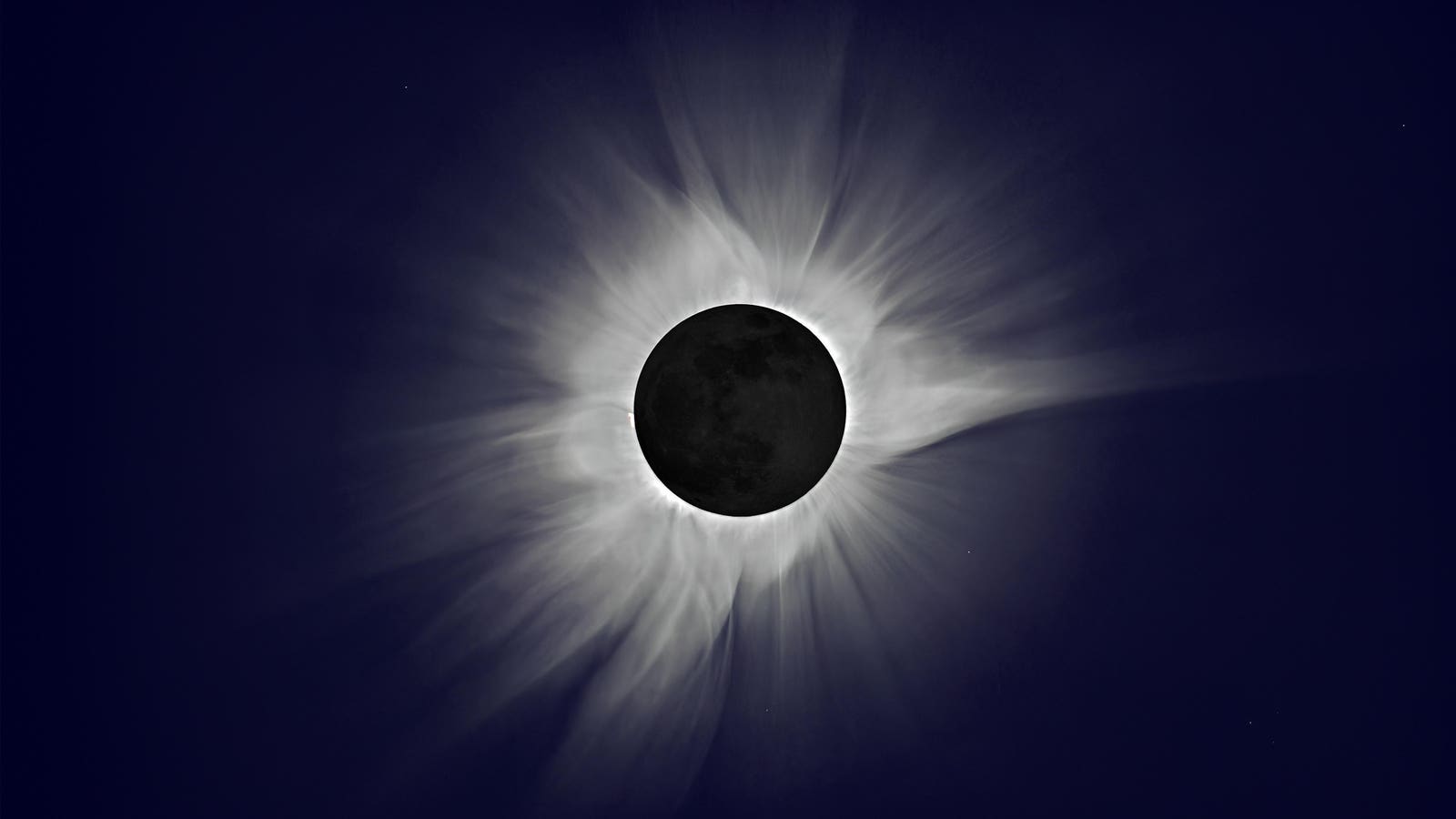Topline
The new moon on Saturday, Aug. 23, will be a seasonal “black moon” — a rare occurrence when four new moons fall within a single season. While it’s mainly a calendar quirk, it holds added significance for North America for an echo it will have in the mid-century. Exactly 19 years later on the same date — Aug. 23 in 2044 — a new moon will occur again, causing the next total solar eclipse to cross the contiguous U.S.
The March 9, 2016 total solar eclipse from Pulau Dua on the East coast of Sulawesi Island, Indonesia.
getty
Key Facts
A new moon will occur at 2:06 a.m. EDT on Aug.23. A new moon occurs once every 29.5 days when the moon is roughly between Earth and the sun.
It’s called a seasonal black moon because it’s the third of four new moons in a season. Between the June solstice and the September equinox, there are four new moons this year, something that only happens just less than every three years.
Exactly 19 years after the new moon on Aug. 23, 2025, there will be a new moon on Aug. 23, 2044.
Aug. 22/23, 2044, will see a total solar eclipse — by definition, a new moon — visible from western Greenland, Canada and the U.S. (Montana and North Dakota only). It’s the next total solar eclipse visible from the contiguous U.S.
The Two Types Of ‘black Moon’
There are two types of black moon — seasonal and monthly. A monthly new moon is when two new moons occur in the same calendar month, which can happen because there’s a new moon every 29.5 days. According to TimeandDate, a seasonal black moon occurs every 33 months while a monthly new moon happens every 29 months.
What Is The Metonic Cycle?
A Metonic cycle is a period of 19 years after which the phases of the moon repeat on the same calendar dates, according to the U.S. Naval Observatory. Nineteen solar years is exactly 235 lunar months (the time between new moons), so every 19 years, the moon returns to the same phase on roughly the same date. That’s why 19 years after the “black moon” on Aug. 23, 2025, there will be another new moon — and in this case, a total solar eclipse — on Aug. 23, 2044. The Metonic Cycle was first noticed by Meton of Athens in the 5th century BC, according to Britannica.
What’s Next In The Night Sky
The period around a new moon is ideal for stargazing, particularly in August, when the Milky Way is visible in the south from dark sky locations. Another upcoming sky highlight will occur before dawn on Sunday, Aug. 31, in the east-northeast sky when brilliant Venus will appear very close to the Beehive Cluster (M44), an open cluster of stars in the constellation Cancer.
Further Reading








